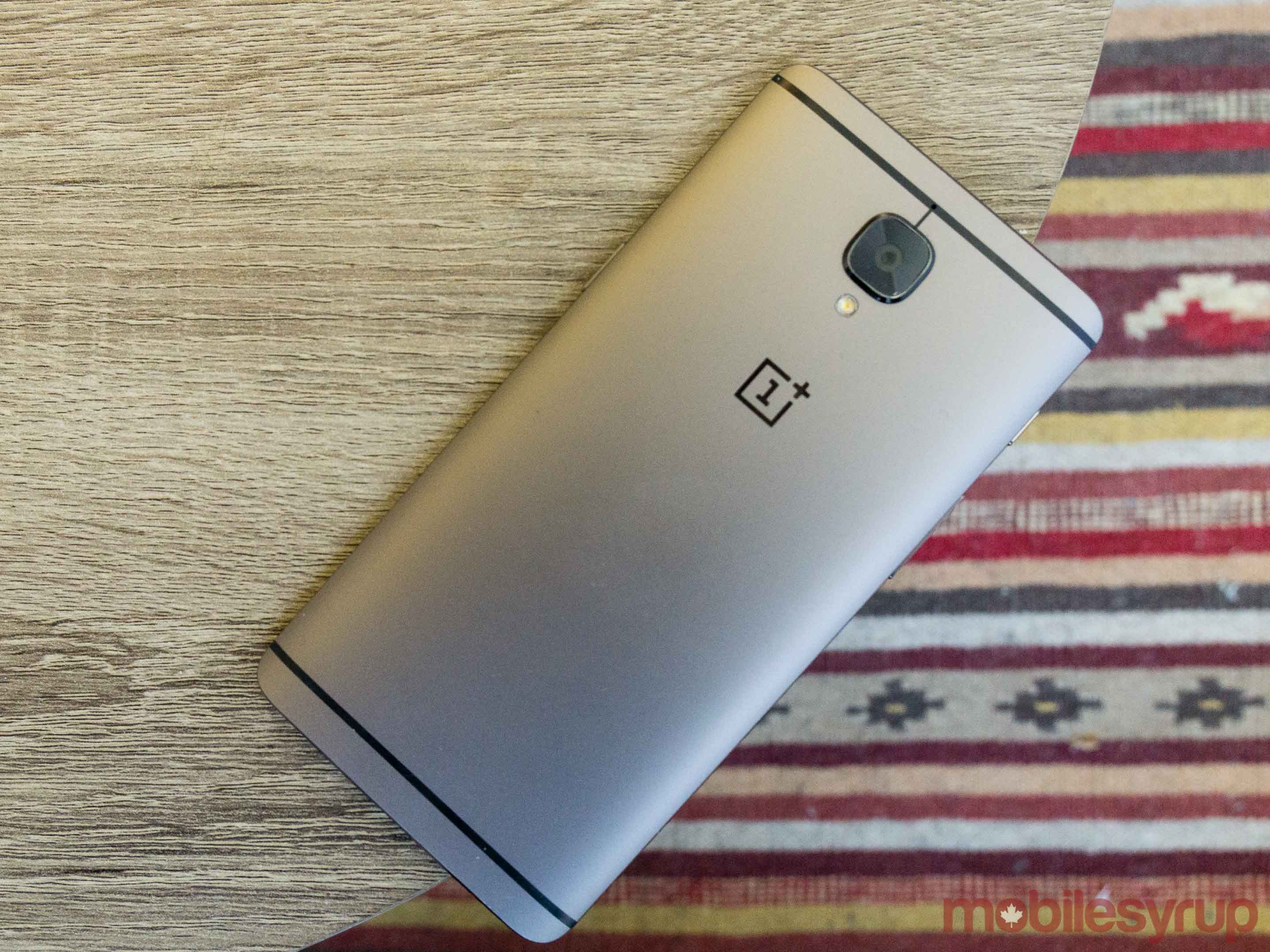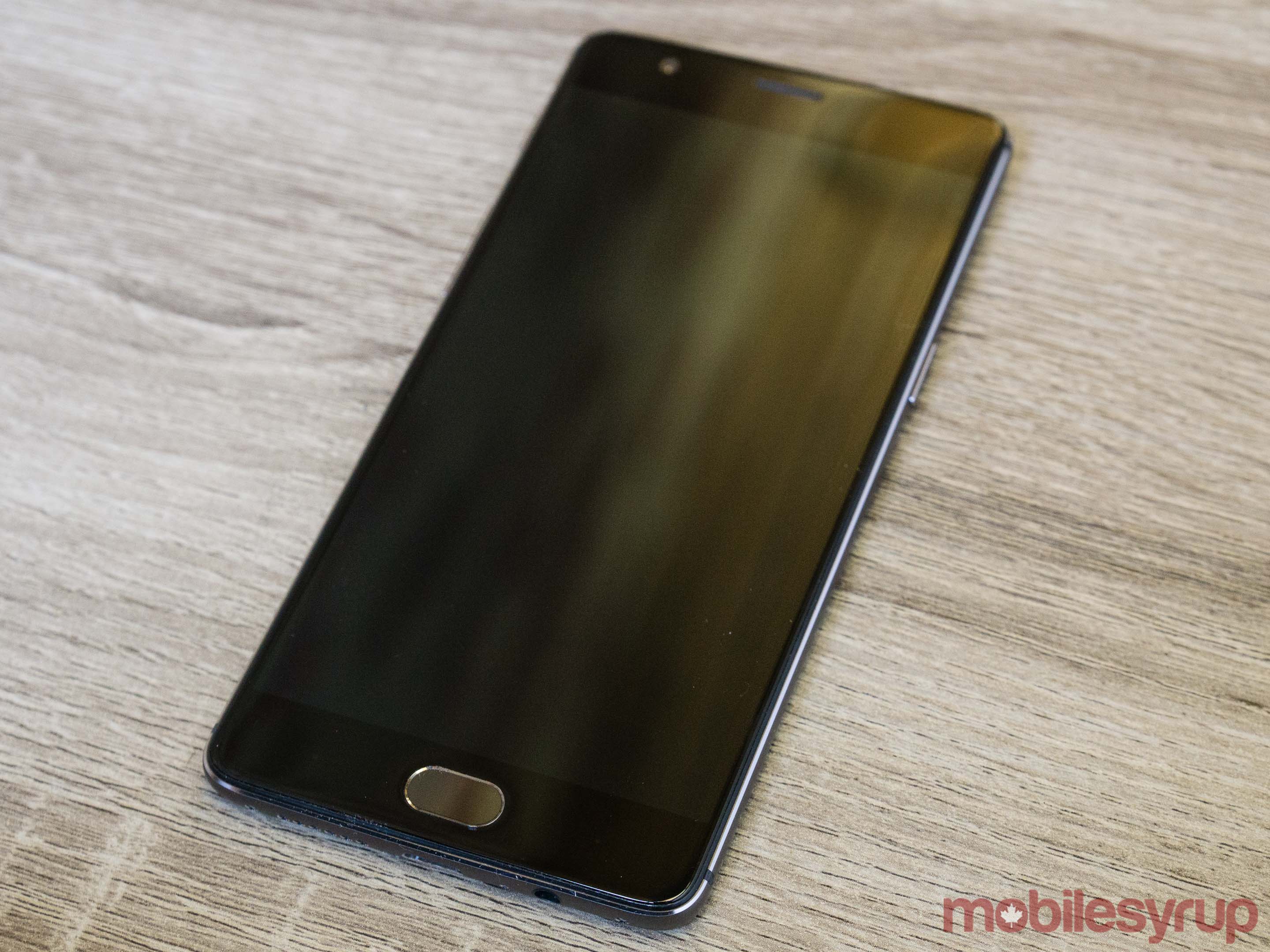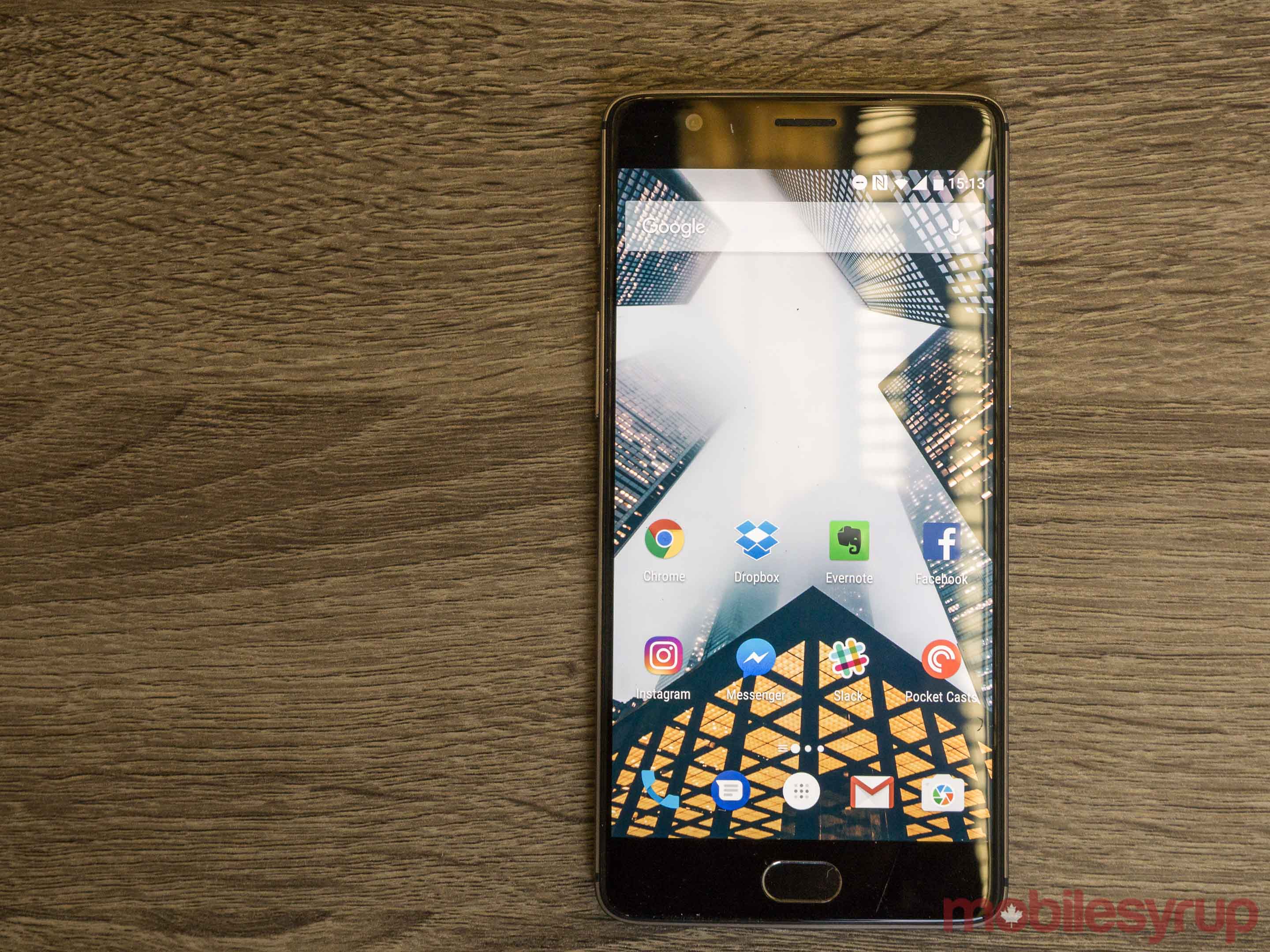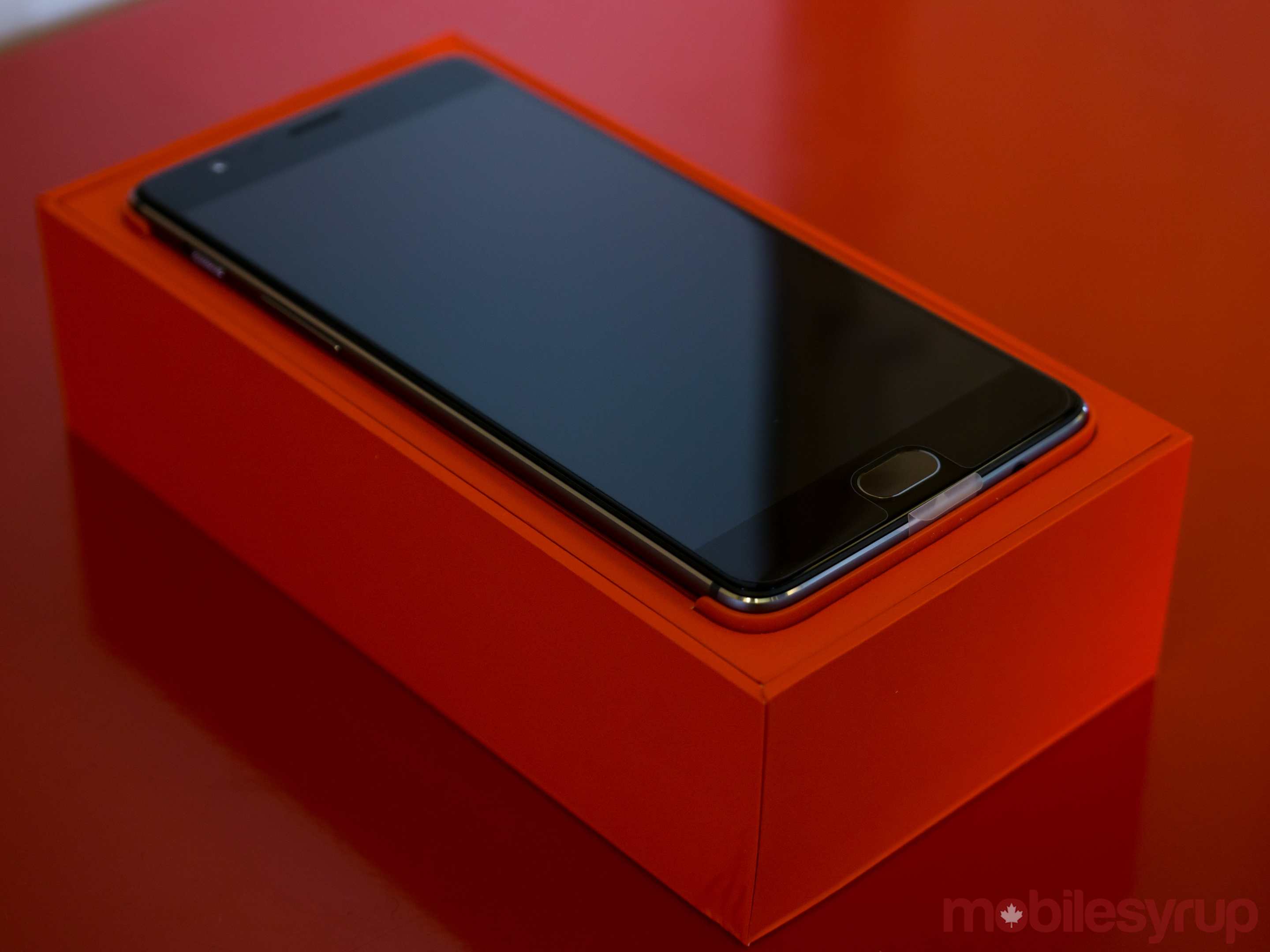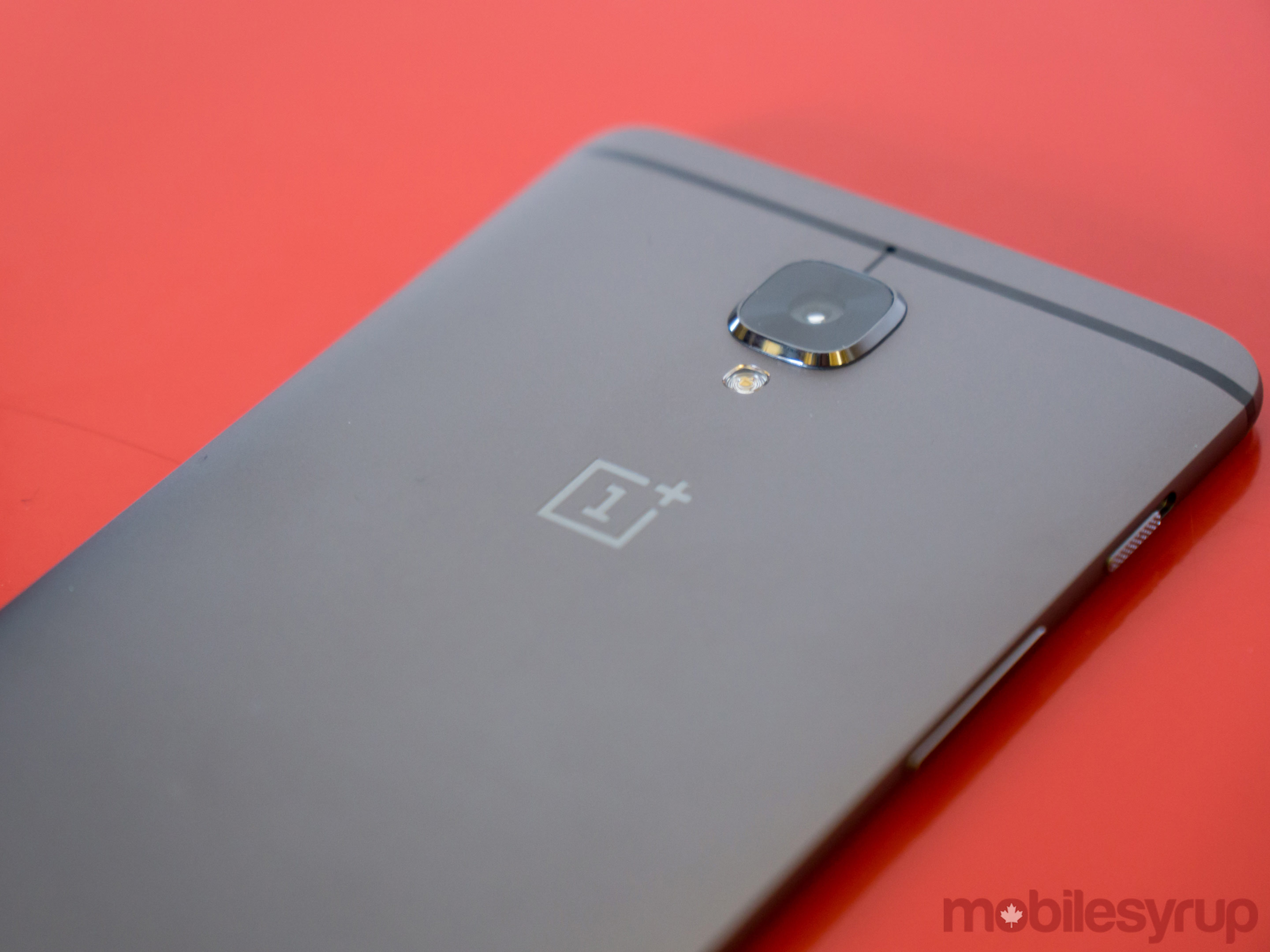
The Pros
- Superb performance & improved battery life
- Near stock Android with smart additions
- Handsome new Graphite colour
The Cons
- $100 more expensive
- OnePlus 3 is still a great smartphone
- Not water or dust proof like other flagships
Several weeks after the OnePlus 3 came out, Ian Hardy, MobileSyrup‘s publisher, asked me whether the website should run a “three months later” feature on the device.
“Bossman,” I said, “shouldn’t we wait until the phone is at least six months old?” My reasoning was that most publications, should they decide to revisit a device, wait about half a year after release to publish that type of feature.
In hindsight, we should have probably done the retrospective then, because, as it stands now, OnePlus no longer sells the OP3.
In an unusual move, the Chinese startup announced a mid-year upgrade to its 2016 flagship on November 15th. Dubbed the OnePlus 3T (because ‘T’ follows ‘S’ in the English alphabet and there’s one company in particular that has a fondness for the letter ‘S’ when naming its incremental hardware updates), the phone features three major upgrades over its predecessor.
Specs
- Qualcomm Snapdragon 821
- Adreno 530 GPU
- 6GB of RAM
- 64GB of internal storage (128GB also available for $40 more)
- Lithium polymer 3,400mAh battery
- Android 6.0.1 Marshmallow with Oxygen OS 3.5.3 (Android 7.0 upgrade planned)
- 152.7 x 74.7 x 7.4 mm
- 158 grams
- 5.5-inch 1080p Optic AMOLED display
- 16-megapixel rear-facing camera with f/2.0 aperture, phase detection auto-focus and optical image stablization
- 16-megapixel front-facing camera with f/2.0 aperture
- Not water resistant
- USB-C port with Dash Charge
- 3.5mm headphone jack
- front-facing fingerprint sensor
To start, it replaces the OnePlus 3’s Snapdragon 820 SoC with Qualcomm’s current top-of-the-line silicon, the Snapdragon 821. According to Qualcomm, the Snapdragon 821 chipset is designed to deliver a 10 percent performance increase over its immediate predecessor. While that’s not an insubstantial improvement, it’s not the kind of increase you spend an additional $600 to acquire. In any case, the OP3 was already one of the snappiest phones available to Canadian consumers when it came out, and the same goes for the 3T.
If you’re in the market for a new phone, then the inclusion of the 821 becomes more attractive. Between its 6GB of RAM and processor, the 3T should stay relevant for two to three years. In my mind, it’s for this reason that it’s worth it to buy the 3T today, even if next year’s crop of high-end smartphones are three months away.
The next major difference between the two devices is the higher capacity 3,400mAh battery found on the 3T. Compared to the OnePlus 3’s battery, the 3T’s power cell is 12.5 percent bigger. During my time with the 3T, I was routinely able to go a full day on a single charge. In case I forgot to top off the phone at the end of the day, the 3T always had enough remaining power in the morning to get me through until about midday, which is about the same experience I had with the OnePlus 3. Put another way, battery life on the OnePlus 3T is excellent for a phone with the 3T’s internal components, and the included Dash Charger will get the phone up and running again in short order.
Lastly, the 3T features a 16 megapixel front-facing camera. At best, this is something of a lateral upgrade. Due to the smaller size of its sensor pixels, in less than ideal lighting conditions the 3T takes noisier photos. The trade off is that shots are more detailed when there’s ample light.
In terms of more minor changes, the 3T drops the ‘Graphite’ of the original OnePlus 3 in favour of a darker ‘Gunmetal’ grey paint job, which, due to its similarity to Apple’s ‘Space Gray’ colour, I found easy to like (it’s also available in an attractive ‘Soft Gold’ finish). For a reasonable $40, consumers can also upgrade to the 128GB ROM model.
Perhaps the most pleasant surprise I found upon returning to the OnePlus 3 was the latest version of OxygenOS, the company’s Android skin. When I first reviewed the OP3, I gave the skin a lot of praise for its simplicity and adherence to stock Android.
In the six months since I reviewed the OnePlus 3, OnePlus has done an excellent job of polishing what was already a great operating system into an even better one. The most notable difference is a new sRGB colour space option that completely transforms the look of the OnePlus 3’s screen (I wrote a guide on how to enable the option). Without getting into too much technical detail, when the OP3 first came out, it had poor colour reproduction. Post update, it’s now one of the most accurate displays on the market.
Other software subtle software improvements like this abound. One of my favourites is the new Shelf users can access by navigating to the left-most page of the home screen. It’s been slightly redesigned to include widgets with access to the user’s recent contacts, apps, as well as one that provides a status update on the phone’s battery and the user’s data usage.
However, the best part of all these software improvements is that you don’t need to buy the 3T to take advantage of them. They’re all available on the OnePlus 3. In a Reddit AMA, OnePlus confirmed the OP3 and 3T are now on the same software update schedule. Save the company drastically changing its mind between now and next few months, both devices should continue to get updated into 2017 and beyond. We’ll revisit the two devices when OnePlus updates them to Nougat.
If you already own the OnePlus 3, then you can safely skip the 3T. It’s a worthwhile update to the OnePlus 3, but as said earlier in the review, it’s not worth paying an additional $600 to replace an existing OnePlus 3 with the 3T.
More complicated is the question of whether a person should buy the 3T as an upgrade to an older device. Some may point to devices like the ZTE Axon 7, Huawei Honor 8, Le Eco Pro 3 as better, more affordable alternatives to the 3T.
And if cost is your only consideration, then, sure, get one of those phones, but if I was in the same situation and had the extra money to spend, then I would buy the OnePlus 3T. The moment-to-moment experience of using this phone is truly excellent, so much so that I continue to prefer this phone over some of the more expensive high-end phones available to Canadian consumers.
MobileSyrup may earn a commission from purchases made via our links, which helps fund the journalism we provide free on our website. These links do not influence our editorial content. Support us here.

